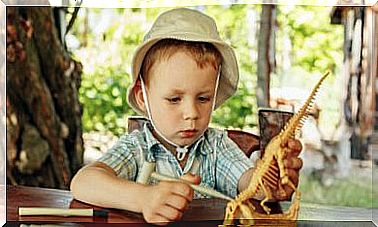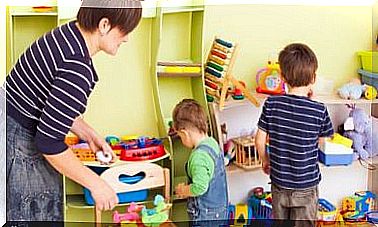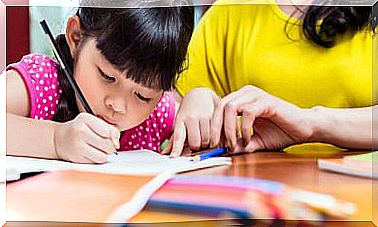Play As A Methodological Axis Of Childhood
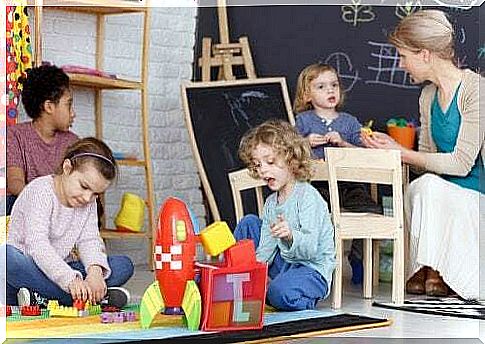
In the educational context , play as a methodological axis of childhood is the basis on which the teaching-learning activities of children are organized. Play encourages imagination and creativity and allows children to achieve meaningful learning without being aware that they are learning because they are learning by playing.
Types of play
There are many types of games, which can be classified, for example, according to the space in which they are made. Therefore, there are games that can be made indoors, such as symbolic or reasoning and logic games, or outdoor games with objectives related more to physical and motor development.
Furthermore, games can be classified according to whether they are free and spontaneous or direct. In the first case, children let their creativity and imagination run free; in the second it is the educator who establishes specific rules in relation to how it should be done, checking that these are implemented.
On the other hand, the games can also be classified according to the number of participants. There are solitaire games, such as a puzzle, couple games, such as those with palms, and many other games that more than two children can play.
Games according to the functions they help develop
The classification also varies according to the functions that are exercised during play and the characteristics of the activity that children develop. These games can be:
- To exercise the senses. Such as, for example, identifying dimensions and materials or hearing sounds of animals or nature.
- To exercise fine motor skills. These involve movements such as jumping, running, going up and down, etc.
- Aimed at construction and assembly. Performing actions such as trapping, pressing, tilting, screwing, holding, fixing, emptying, filling, balancing, etc.
- Symbolic games. Real life situations and scenes are imitated, representing roles, situations and people.
- Verbal games. Where the word is central, such as riddles, nursery rhymes, poems, stories, tongue twisters.
- Logical reasoning. Games such as puzzles, wooden tetris or chess for children lay the foundations for the development of calculation skills by assimilating mathematical concepts such as seriation, classification and correspondence.
- Games to exercise spatial relationships. They are games to be played, generally, in large spaces and involve activities that involve overcoming obstacles, exits, hiding places, measures and distances.
- To exercise temporary relationships. In these games you learn to differentiate the seasons, or the parts of the day in relation to the activities carried out. Like, for example, in the morning you go to school and in the afternoon you have a snack.

Main characteristics of the game as a methodological axis
As we can see, there are a lot of games. These can be classified according to various criteria but, whatever the type of game, they all share common and defining characteristics. These are:
- Play is a way of interacting with the environment and with reality.
- Its purpose is intrinsic: it is not played with any other goal.
- It is spontaneous, voluntary and motivating.
- During the game all the physical and psychic abilities of the human being are developed, contributing to the progressive construction of one’s identity and autonomy.
- It is the educational resource par excellence because it promotes meaningful and increasingly complex learning. It allows the acquisition of skills and abilities, role models and values.
- It is a source of pleasure, satisfaction, entertainment and enjoyment.
- It allows the free expression and manifestation of children, their feelings and moods.
- It performs a compensatory and integrative and, sometimes, rehabilitative function.
- It provides for the relationship with others and promotes socialization.
- Develop fantasy, imagination and imitation, allowing children to create imaginary realities by implementing different acting strategies.
Play as a methodological axis of childhood
The educational phase called childhood includes a period ranging from birth to 6 years of age, and is organized in two cycles. The first, which lasts up to 3 years, and the second, which varies from 3 to 6 years.
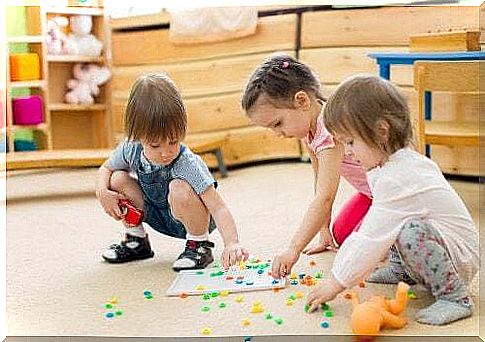
This educational phase refers to a fundamental period in the growth of children. For this reason, the educational system establishes that play is a fundamental methodological axis for organizing the teaching-learning processes and the organization of contents.
The game as a methodological axis has its raison d’être because it allows a progressive advancement in the different areas of children’s development, be they social, emotional, cognitive, physical and motor. In particular, the game in this specific educational phase develops the following skills:
- Linguistics. Expand your vocabulary and improve oral expression and comprehension.
- Physical-kinesthetic . Gross and fine motor skills and mastery of the body scheme.
- Logical-mathematical. It solves problems, stimulates attention and memory.
- Spatial and temporal. Practice position and orientation, as well as visual memory.
- Musical. It teaches to recognize sounds and form auditory memory.
- Interpersonal. It affects cooperation, communication, solidarity, teamwork and conflict resolution.
- Intrapersonal. Work on managing feelings and emotions, self-esteem, self-discipline, self-criticism, patience and responsibility.
